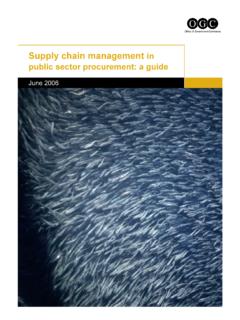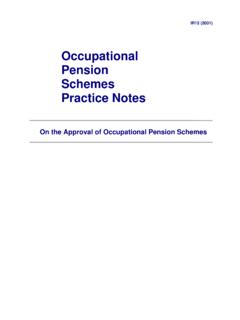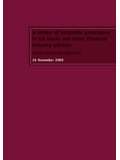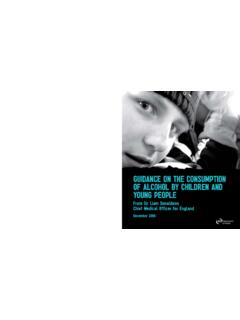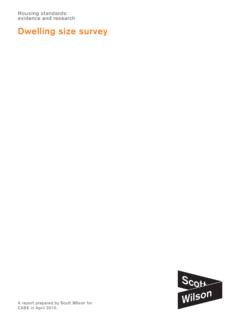Transcription of Paying for parks: eight models for funding urban …
1 Paying for parksEight models for funding urban green spacesPublished in 2006 by the Commissionfor Architecture and the Built design by by Route, London on Starfine environmentally friendly rights reserved. No part of thispublication may be reproduced, storedin a retrieval system, copied or transmittedwithout the prior written consent of thepublisher except that the material may bephotocopied for non-commercial purposeswithout permission from the document is available in alternativeformats on request from the : 1 84633 011 4 CABE is the government s advisor onarchitecture, urban design and public a public body, we encourage policymakers tocreate places that work for help local planners apply national designpolicy and offer expert advice to developersand architects. We show public sector clientshow to commission buildings that meet theneeds of their users. And we seek to inspirethe public to demand more from theirbuildings and spaces. Advising, influencingand inspiring, we work to create well-designed,welcoming Space is a specialist unit within CABE that aims to bring excellence to the design,management and maintenance of parks and public space in our towns and 1 Kemble Street London WC2B 4 ANT 020 7070 6700 F 020 7070 6777E Executive summaryIntroductionStrategic contextEight models for funding urban green spaces1 Traditional local authority funding2 Multi-agency public sector funding 3 Taxation initiatives4 Planning and development opportunities5 Bonds and commercial finance6 Income-generating opportunities7 Endowments8 Voluntary sector involvementCan the eight models work here?
2 Applying the funding modelsConclusionsAppendix A Methodology, terms of reference, list of stakeholders consultedAppendix B Bibliography and references341317252628303436384244496171 7879 MartinCharles3 ForewordIn recent years, many parks and open spaces in the UK havereceived significant lottery funding . Additional capital hashelped a renaissance in our parks. The challenge we now faceis ensuring long-term security for funding these green , poorly maintained green spaces can underminethe regeneration and revival of neighbourhoods. The LocalGovernment Association (LGA) campaign, Closer to Peopleand Places , emphasises the role for councils, working withtheir partners in the public, private and voluntary sector,creating places where people are proud to live. The challenge for green space managers is to think moreimaginatively about sources of revenue and capital funding forgreen space. This might be achieved partly through existingchannels of challenge funding or departmental budgets; butsolutions will be found in innovative partnership working andby demonstrating the benefits of green spaces to theauthority s wider environmental and social ambitions.
3 Using avariety of innovative and different models for funding greenspace can result in better use of public money, and greatercommunity involvement. This welcome research reinforces the importance of givinglocal communities greater say over the way their publicservices are run, and looks at ways voluntary andneighbourhood groups can get involved in the managementand maintenance of green space. It also highlights the needfor partners to work together in the delivery of projects thatimprove people s quality of life and economic Bruce-LockhartChair, Local Government Association Using a variety of innovative and differentmodels for funding greenspace can result in betteruse of public money, and greater communityinvolvement Parks are part of our heritage. Today, with a growing emphasis on leisureand with higher-density development, our parks are now playing an evermore important role in providing amenities and enhancing people squality of a roll: bowls players at the Peace Pavilion,Wigston Magna, Leicester.
4 The pavilion includes a bowling green and hosts a playgroup4 Executive summaryThe challenge now is to ensure the long-term sustainability of theseimprovements in the conditions of urban green spaces across the country. Inmany cases, this will require the identification of alternative sources of revenueand capital for public parks and urban green spaces was significantly reducedbetween 1979 and 2000, losing an estimated billion in and green spaces were not, and are not, a statutory service that localauthorities are legally obliged to provide, they slipped down the political agenda,losing out to formal recreation and leisure activities that generated revenue, andstatutory environmental services such as waste management and the same time the skills base in green space management was wasting parks sector was suffering not only from an ageing workforce and a shortageof horticultural skills, but also from a critical lack of management, promotional,presentational and interpersonal skills.
5 In 2003, 68 per cent of parks staff wereover 40 years old and 92 per cent were over 30 years old, many staff were poorlymotivated and the public perception that the work was low-skilled, mundane,physical, menial and boring was leading to difficulty recruiting new blood into theparks result of these funding cuts and skills shortages, as the urban GreenSpaces Taskforce highlighted in 2002, was a significant decline in the quality ofparks and a failure to meet the needs of increasingly diverse urban populations. The challenge now is to ensure the long-termsustainability ofimprovements in theconditions of urban greenspaces across the many cases, this willrequire the identification of alternative sources ofrevenue and capital funding The last three decades of the 20th century saw a sustained decline in the quality of urban greenspaces in is now beginning to turn around. Today the quality of green space isimproving rather than declining. Greater public priority for investment has enabled localauthorities, public bodies and over 4,000 community groups to bring about the refurbishmentand renewal of many urban green Throughout this report the terms urban greenspace and urban green spaces are used to includethe full range of open space typologies identified inPPG17.
6 For further information urban green space, National AuditOffice, parks assessment: a survey of local authorityowned parks, urban Parks Forum, GreenSpace, need parks need people the skillsshortage in parks: a summary of research,CABE Space et al. recently, a number of initiatives have been put in place by government to help enhance urban green space. These policies, together with significantinvestment from the national lottery, and in particular the Heritage Lottery Fund,have helped reverse the fortunes of many of our public parks. The number ofGreen Flag Awards is increasing and the National Audit Office recently noted a doubling of the local authority managers believing their parks and green spacesto be improving. However, in places throughout the country, it is still a struggle to find capital funding to improve those parks that remain run-down, and revenuefunding to ensure that restored parks are maintained to a good standard and do not decline for parks: eight models for funding urban green spaces considers themain ways of funding the management and maintenance of urban green spacethat are being used throughout the world and recommends funding models thatcould be applied in England to parks and other urban green spaces in a range of contexts.
7 The report focuses on publicly owned land and examines models for organisations working in this findings are based on an analysis of existing research and policy on thefunding of urban green space, interviews with key organisations that havedeveloped innovative approaches, and reviews of relevant national andinternational best report: examines the economic, social and environmentalbenefits of green space, the reasons for the past decline in its quality and policies for reversing that decline reviews national and international examples offunding for urban green space identifies eight funding models that could be used to support urban green space in England considers the benefits and drawbacks of the eightfunding models and their applicability to areas of high and low housing Traditional local authority funding In England, green space managed by local authorities is usually funded from theauthority s general revenue budget, which is financed from local taxation and/orgovernment transfers.
8 Green space is one of many services funded from thisbudget and parks departments have to compete for the money. The decisionabout how the general revenue budget is distributed among competing servicesis made by councillors. Strengths local and national taxation provides a relatively stable source of funding on an annual basis strategic thinking can enable pooling of resources between and within local authority departments, neighbouring local authorities and the voluntary and community annual funding arrangements can result in financial uncertainty and an inability to think long term ring-fencing funding specifically for urban green space is unusual due to its non-statutory status, and has often been cut when savings have to be made partnership working can be difficult if urban green spaces span several local authority boundaries. 2 Multi-agency public sector funding In England, funding can be accessed from a range of government departmentsand agencies for the delivery of projects that meet cross-cutting targets, forinstance targets for public health, young people, crime or sustainabledevelopment.
9 Often this money could be used to fund urban green spaces. Strengths pooling of resources between different bodies can support mutual goals leading to efficiency savings and better value for money encourages the formation of partnerships and can build community many initiatives that encourage collaboration are one-off and short term there is competition for resources from other areas, for example police and health , France: the city s policy for urban greenspace is defined exclusively by the city s mayor,subject to the approval of the councilHillingdon, London: Healthy Hillingdon is apartnership between the borough s parksdepartment and the local primary care trust,founded on the premise that encouraging greateruse of urban green space can help promote public health and prevent illness eight models for fundingurban green space NicoleCollomb BTCVG reenGym73 Taxation initiatives In many countries levies on property, or tax credits, can be ring-fenced to fundthe management and provision of urban green space.
10 Strengths dedicated local taxation can secure reliable and significant financial resources good quality urban green spaces can increase property values and create tax revenue when properties are bought and English local authorities have limited autonomy and freedom to impose additional local taxes an initial financial outlay is involved and returns from schemes may take time to be realised. 4 Planning and development opportunities Planning agreements can ensure funding for the provision and management ofurban green space in, and around, new residential and commercialdevelopments. Strengths can provide steady funding which is secured at the outset establishes mutual public and private goals as property developers are required to contribute to developing and maintaining publicly accessible green space that can in turn help to increase the value of their assets and the funding is susceptible to competition from other types of infrastructure such as public transport, community buildings and waste management can be used only for new , Australia: the primary source of funding for metropolitan parks is a parks charge levied ondomestic, commercial and industrial propertiesMalm , Sweden: in the Bo01 district, the cityplanning authority ensures that private developerstake responsibility for managing and maintaininggreen spaces in a number of new areas ofresidential development.
